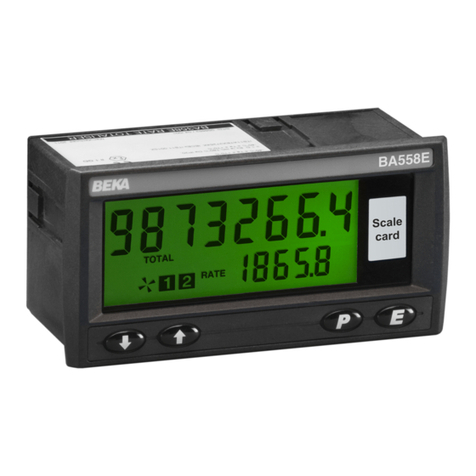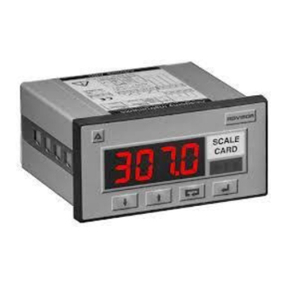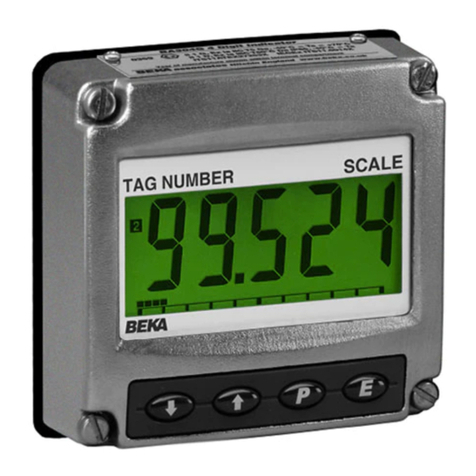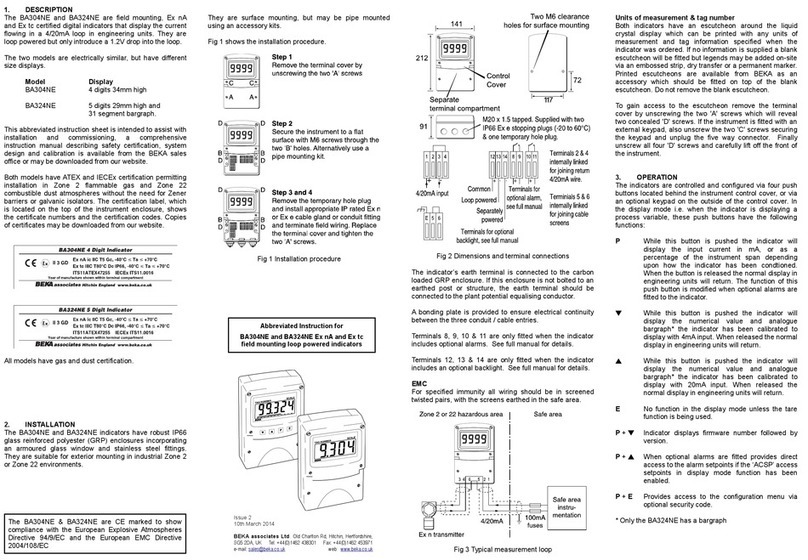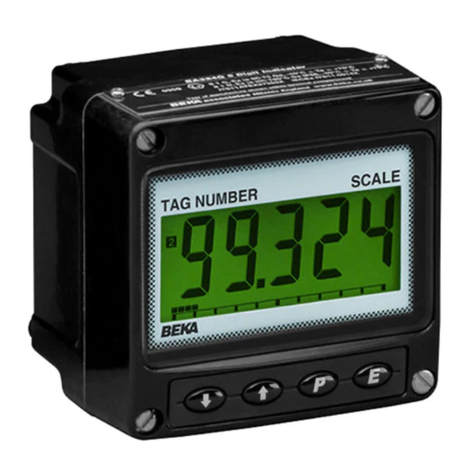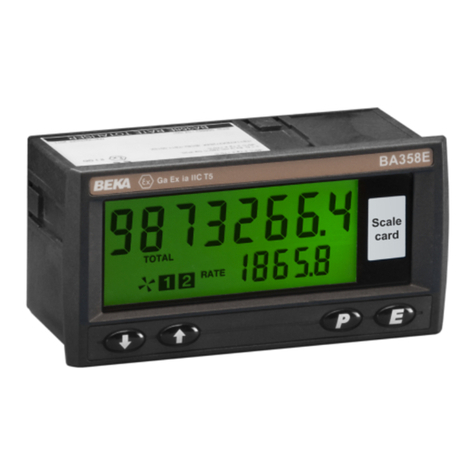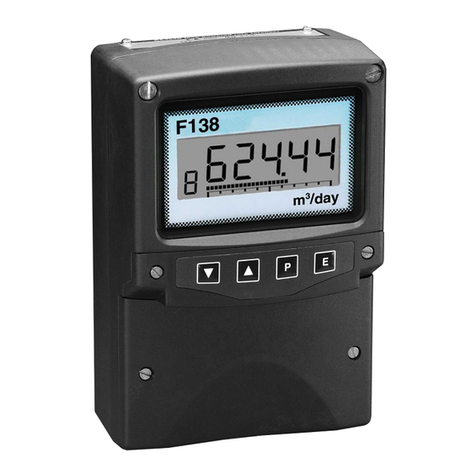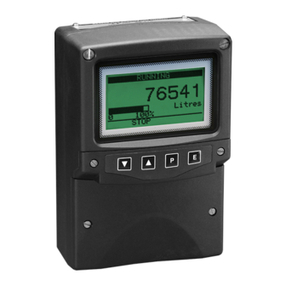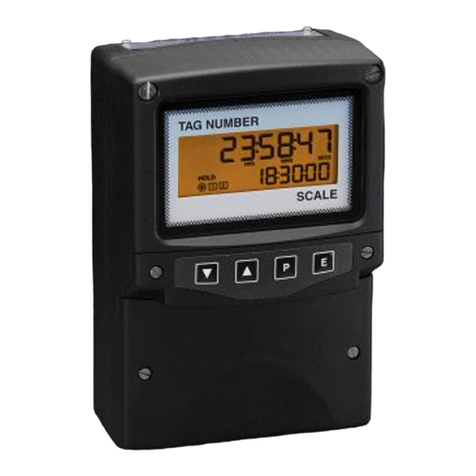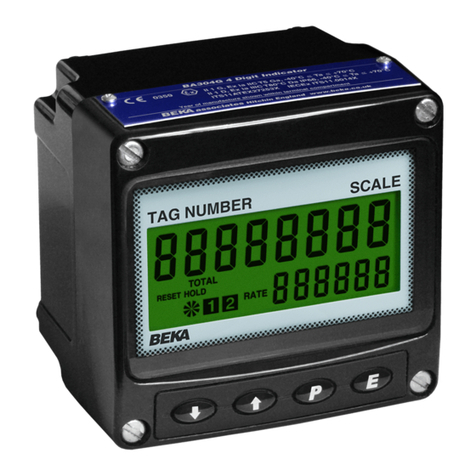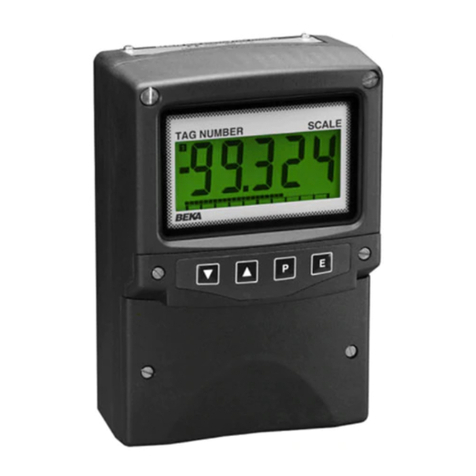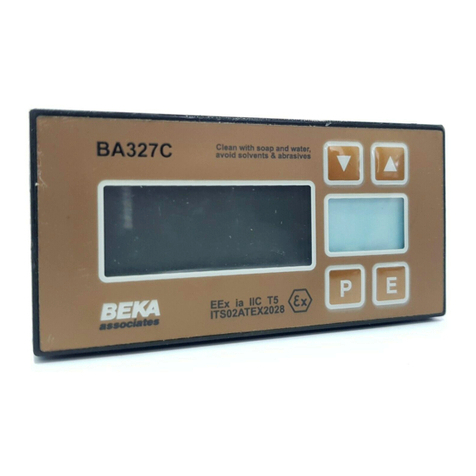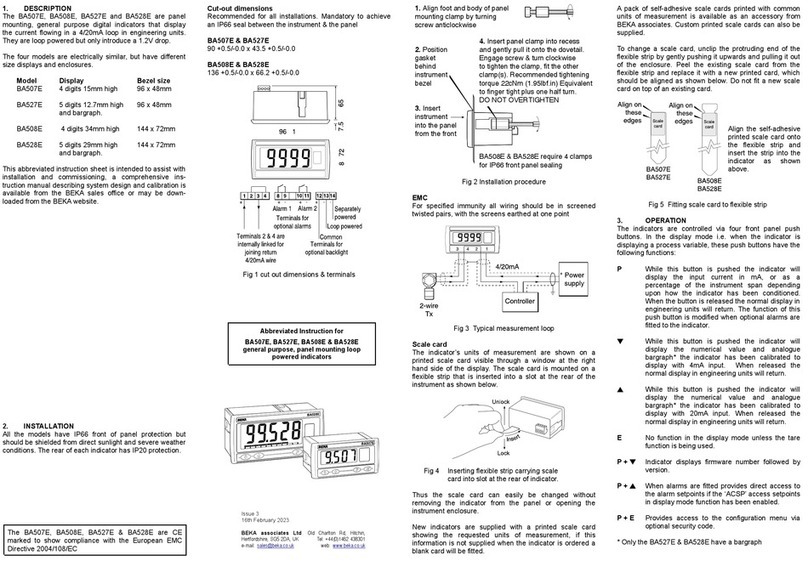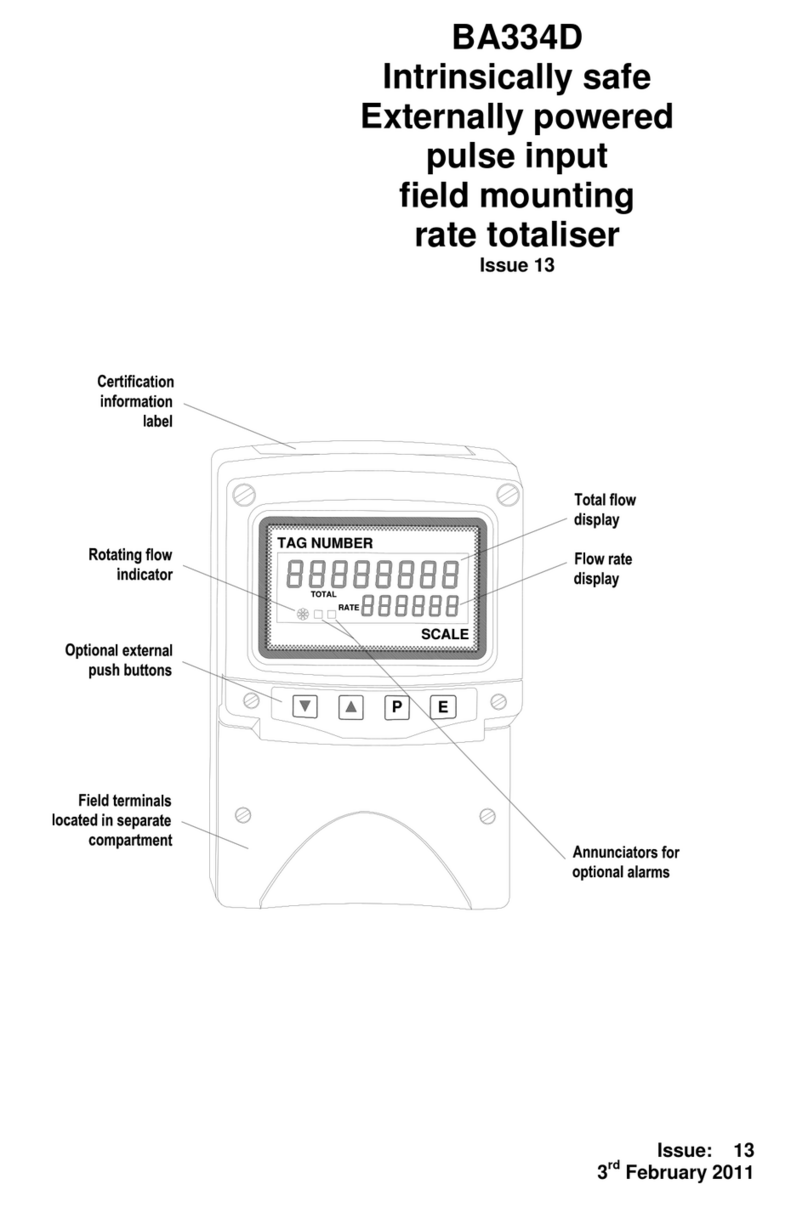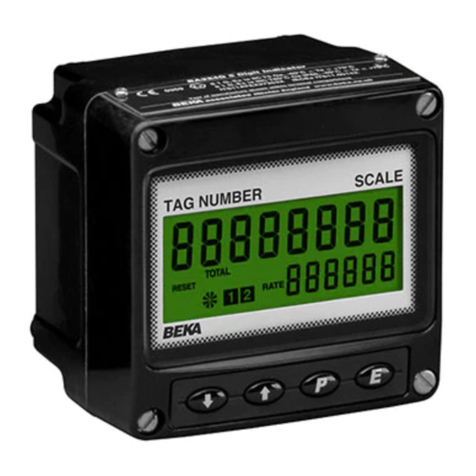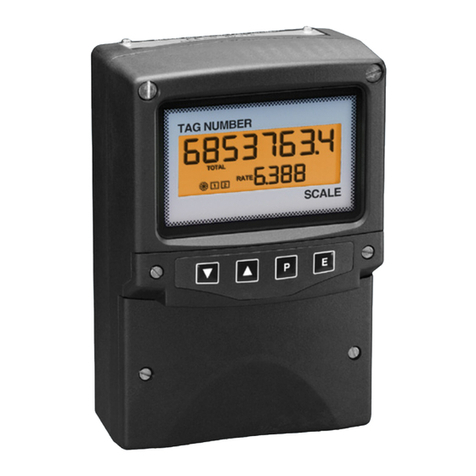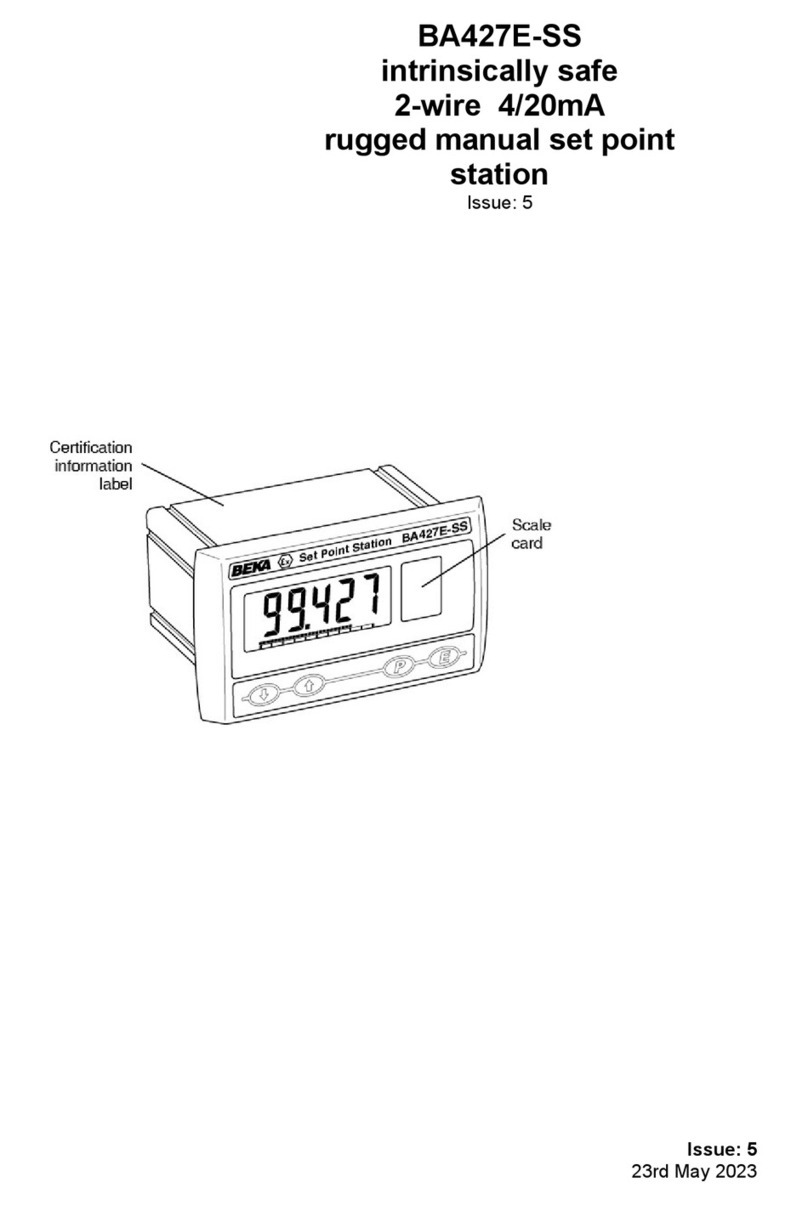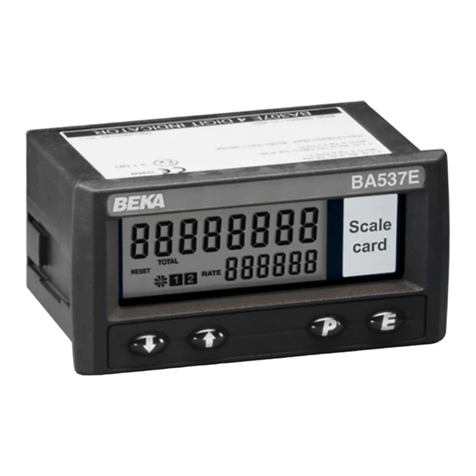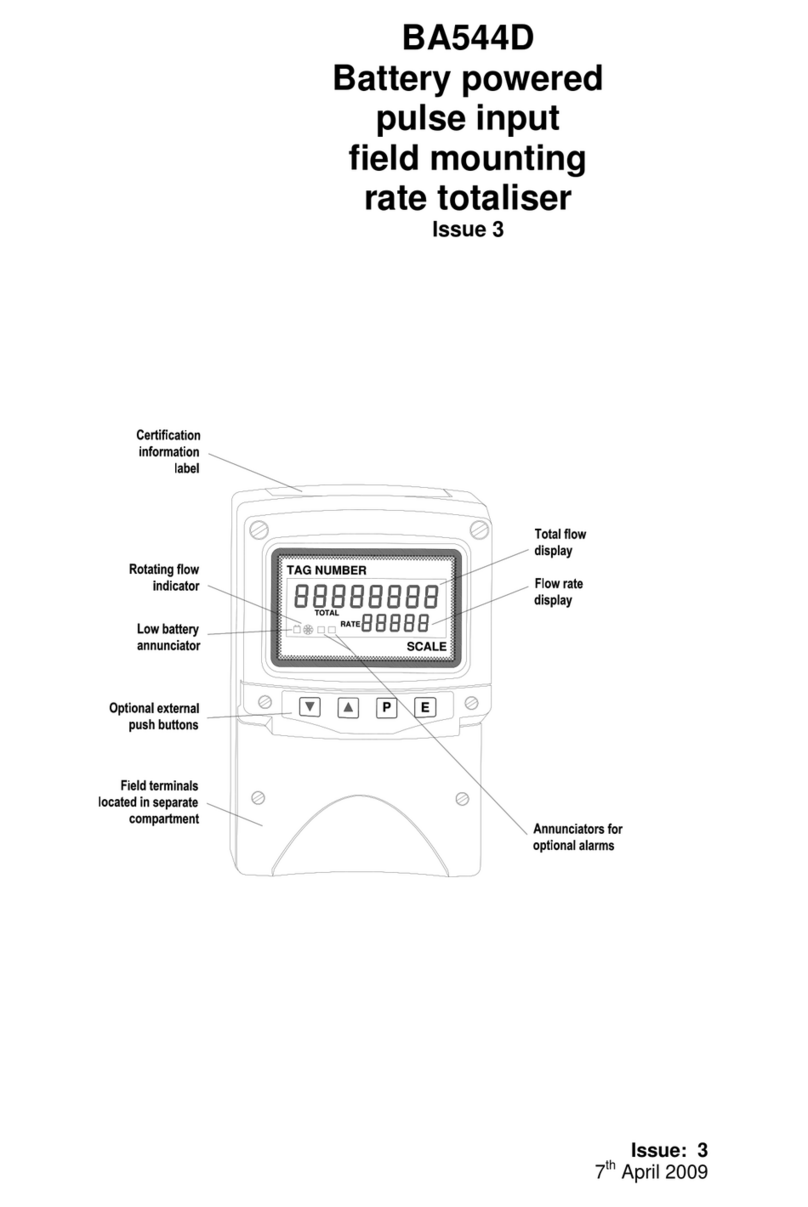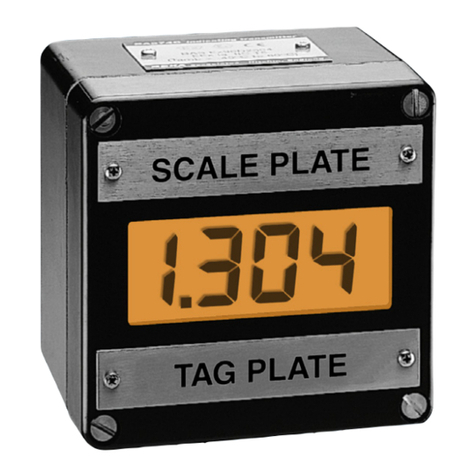Grand Is a 16 digit (15 digit with negative sign)
Total number which is not zeroed when the
total display is zeroed. The Grand Total
is viewed from the operating mode as
two eight digit numbers, it may be reset
to zero from within the configuration
menu or from the operating mode.
3. INTRINSIC SAFETY CERTIFICATION
The BA35 E rate totaliser has ATEX and IECEx
gas certification plus optional dust certification.
This section of the instruction manual describes
ATEX gas certification. Optional ATEX dust,
IECEx and other approvals are described in
separate appendixes to this manual.
3.1 ATEX gas certification
Notified Body Intertek Testing and Certification Ltd
have issued the BA35 E with an EC-Type
Examination Certificate number
ITS11ATEX27253X. This confirms compliance
with harmonised European standards and it has
been used to confirm compliance with the
European ATEX Directive for Group II, Category
1G equipment, Ex ia IIC T5 Ga Ta = - 0 to
+70ºC. The Rate Totaliser bears the community
mark and subject to local codes of practice may be
installed in any of the European Economic Area
(EEA) member countries. ATEX certificates are
also acceptable for installations in Switzerland.
This section of the instruction manual describes
ATEX installations in explosive gas atmospheres
conforming with EN60079-1 Electrical
Installations in Hazardous Areas. When designing
systems for installation outside the UK the local
Code of Practice should be consulted.
3.2 Zones, gas groups and T rating
The BA35 E Rate Totaliser has been certified
Ex ia IIC T5 Ga. When connected to a suitable
system it may be installed in:
Zone 0 explosive gas air mixture
continuously present.
Zone 1 explosive gas air mixture likely
to occur in normal operation.
Zone 2 explosive gas air mixture not
likely to occur, and if it does
will only exist for a short time.
Be used with gases in groups:
Group A propane
Group B ethylene
Group C hydrogen
In gases that may be used with equipment having
a temperature classification of :
T1 50oC
T2 300oC
T3 200oC
T 135oC
T5 100oC
At ambient temperatures between - 0 and +70oC.
CAUTION installation in Zone 0
When installed in a Zone 0 potentially e plosive
atmosphere requiring EPL Ga apparatus, the
instrument shall be installed such that even in
the event of rare incidents, an ignition source
due to impact or friction between the aluminium
label and iron/steel is e cluded.
No special conditions apply when the indicator is
installed in Zone 1 or in Zone 2.
Note: The specified operating temperature of the
BA35 E is –20 to +70ºC. At temperatures below
–20ºC the instrument will continue to totalise but
the display will not function.
This allows the Rate Totaliser to be installed in all
gas Zones and to be used with most common
industrial gases.
3.3 4/20mA input
The input safety parameters for the /20mA input,
terminals 1 and 3 are:
Ui = 30V dc
Ii = 200mA
Pi = 0.8 W
The maximum equivalent capacitance and
inductance between the two /20mA input
terminals 1 and 3 is:
Ci = 13nF
Li = 16µH
The maximum permitted loop cable parameters
can be calculated by adding these figures to Ci and
Li of other instruments in the loop and subtracting
the totals from the maximum cable capacitance Co
and cable inductance Lo permitted for the Zener
barrier or galvanic isolator powering the loop.
Although the BA35 E does not comply with the
requirements for simple apparatus, the EC-Type
Examination Certificate states that for intrinsic
safety considerations, under fault conditions the
output voltage, current and power at terminals 1 &
3 will not exceed those specified by clause 5.7 of
EN 60079-11 for simple apparatus. This simplifies
the application and intrinsic safety documentation
for a loop into which the BA35 E is connected.
Apart from Ci, the affect of the Rate Totaliser may
be ignored when assessing loop safety.
